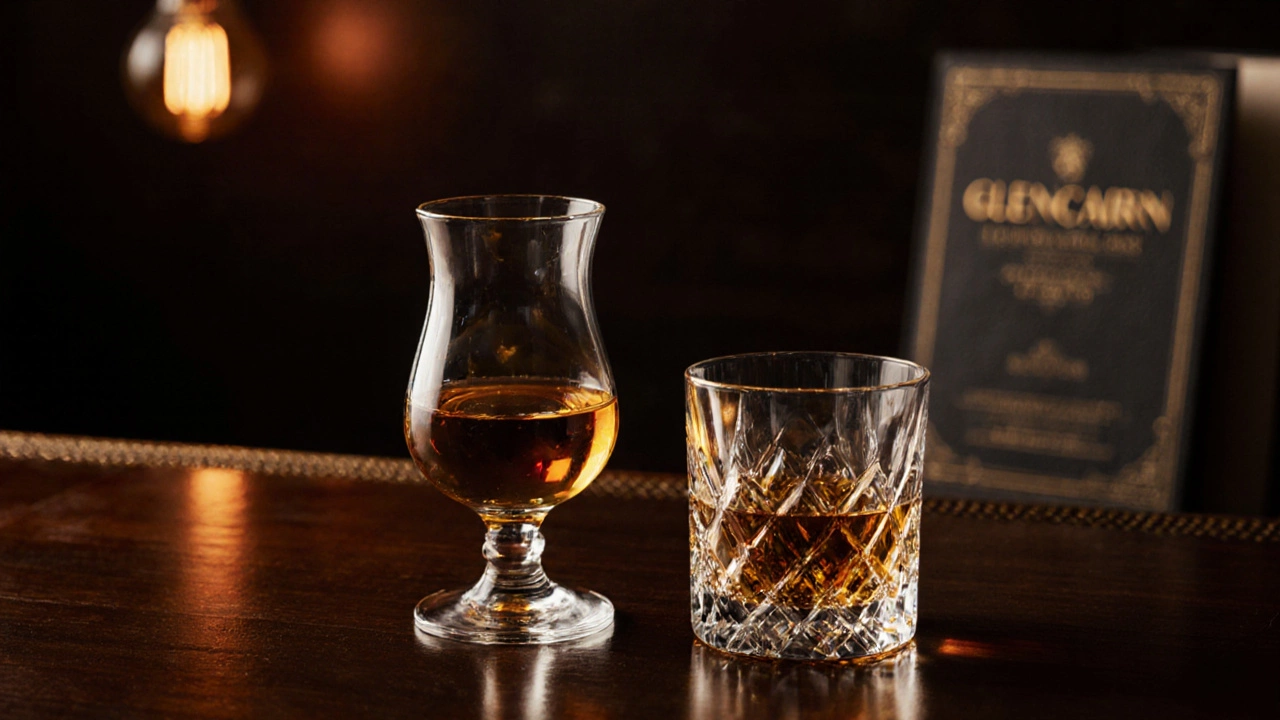How to Serve Whiskey: Tips, Glassware, and Pairings
When working with serving whiskey, the practice of presenting this spirit to bring out its best flavors and aromas. Also known as whiskey service, it blends the right glass, temperature, and food match‑ups. how to serve whiskey can feel like a ritual, but you don’t need a sommelier degree to nail it. Below you’ll find the building blocks – from the vessel you pour into, to the temperature that lets the spirit breathe, to the bites that accentuate its character – all wrapped in a friendly, down‑to‑earth guide.
Whiskey glassware, specialized vessels such as the Glencairn, tumbler, or copita designed to concentrate aroma and control sipping. Also called whiskey glasses, the shape influences how you perceive the spirit. A Glencairn’s narrow mouth funnels volatile compounds toward your nose, while a heavy‑bottomed tumbler lets you hold the glass comfortably and admire the color. Pick a glass that matches the occasion: a sleek rocks glass for a relaxed night, a delicate nosing glass for a tasting flight. The right glass is the first step that lets the whiskey’s story unfold.
Whiskey temperature, the serving temperature, typically between 15‑20 °C, that balances volatility and mouthfeel. Sometimes called serving chill, cooling too much mutes flavor; too warm can over‑emphasize alcohol burn. A quick trick is to store the bottle in a cool, dark cabinet and let it sit at room temperature for 20‑30 minutes before pouring. If you prefer a cooler sip, a single ice cube or a whisky stone can lower the temperature just enough to open up the fruit notes without diluting the spirit. Remember, temperature is a tool, not a rule – experiment to see what brings out the sweet caramel or smoky peat you love.
Whiskey pairing, food or snack matches that complement the spirit’s sweetness, smokiness, or spice. Also known as whiskey food pairing, a good match can highlight notes like caramel, peat, or fruit. Light cheeses such as Manchego or aged cheddar work wonders with a rich, sherry‑cask whisky, while dark chocolate pairs beautifully with a high‑proof bourbon. For smoky Islay malts, try smoked salmon or charred oak‑aged nuts; the salt and smoke echo the whisky’s own peat. Keep the bite size small, let a sip cleanse your palate, and repeat – this rhythm lets the flavors dance without overwhelming you.
Whiskey serving etiquette, the set of polite habits, from pouring amounts to allowing guests to smell before sipping. Sometimes referred to as whiskey service etiquette, it helps create a relaxed, respectful atmosphere. Offer a modest pour – about 30 ml – so guests can swirl, sniff, and taste without feeling rushed. Encourage a moment of “nose‑first” appreciation; a quick waft over the glass can reveal hidden fruit, spice, or leather aromas. Avoid shaking the bottle, and never force a dram on someone who isn’t interested. Small gestures like a clean glass, a gentle hand on the rim, and a brief story about the distillery add personality without overpowering the drink.
Putting It All Together
Now you have the four pillars: the right glass, the ideal temperature, thoughtful food matches, and courteous etiquette. When you combine them, serving whiskey becomes more than just pouring a liquid – it turns into a mini‑experience that showcases the spirit’s heritage and your own taste. Whether you’re hosting a friends‑only tasting, a corporate happy hour, or a quiet night on the sofa, these basics give you confidence to impress without sweating the details.
Below you’ll find a curated list of articles that dive deeper into each of these topics – from specific glass recommendations to detailed pairing charts, from temperature experiments to common serving mistakes to avoid. Use them as a toolbox, pick the tips that fit your setting, and enjoy the process of serving whiskey the right way.
Learn how to drink whiskey with class: choose the right glass, set the perfect temperature, add water or ice wisely, and pair with food for a refined experience.
View Details

